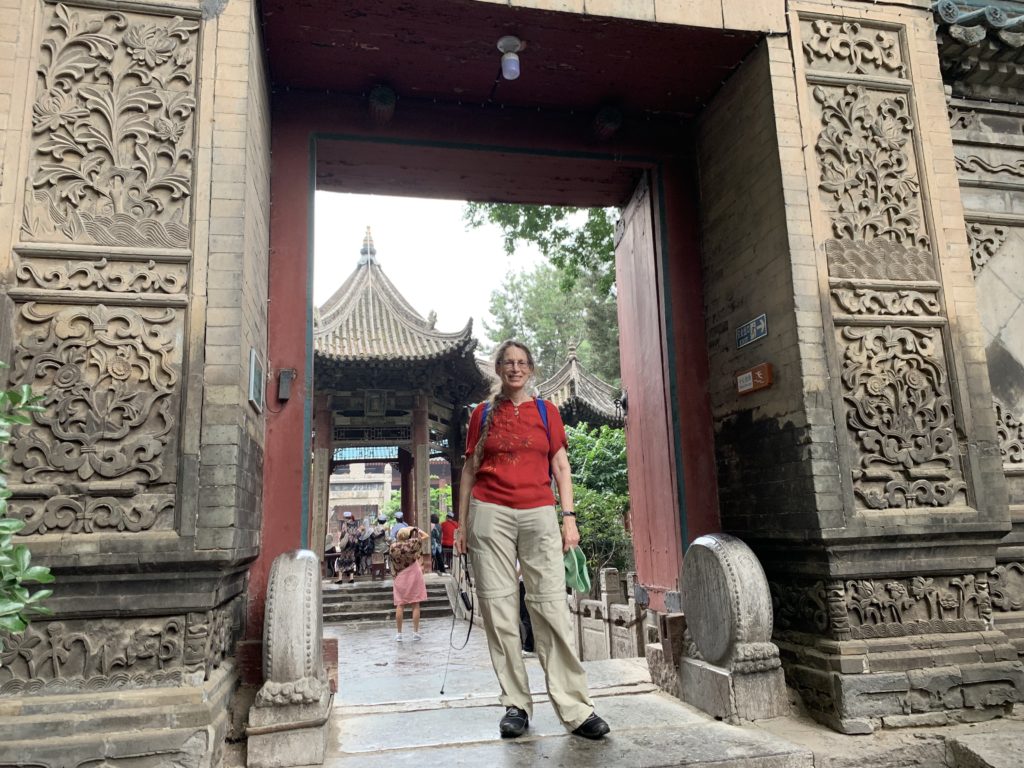
After a rather bumpy 2 hour flight from Beijing, we arrive into Xi’an in North Central China and are amazed, once again, by the amount of development. Numerous large new apartment complexes rise into the grey smog-laden sky on the outskirts of the city. And inside the ancient city walls, we find a modern bustling metropolis, new and prosperous looking. On one block I see Under Armour, Puma, Adidas, H&M and other recognizable logos, not to mention McDonalds and KFC. I ask about the relative cost of this branded clothing, as we all know most of these products are manufactured in China, and I am told they are in fact much more expensive here, 25-50% more than in the U.S., due to taxes and tariffs. So how do people afford such products, I ask? Our local guide says that basic services such as power, water and health care are a small portion of income and so people save up for luxuries, including eating out. When I ask about the minimum wage, I am told there is none – but I imagine the government has a hand in determining a living wage.
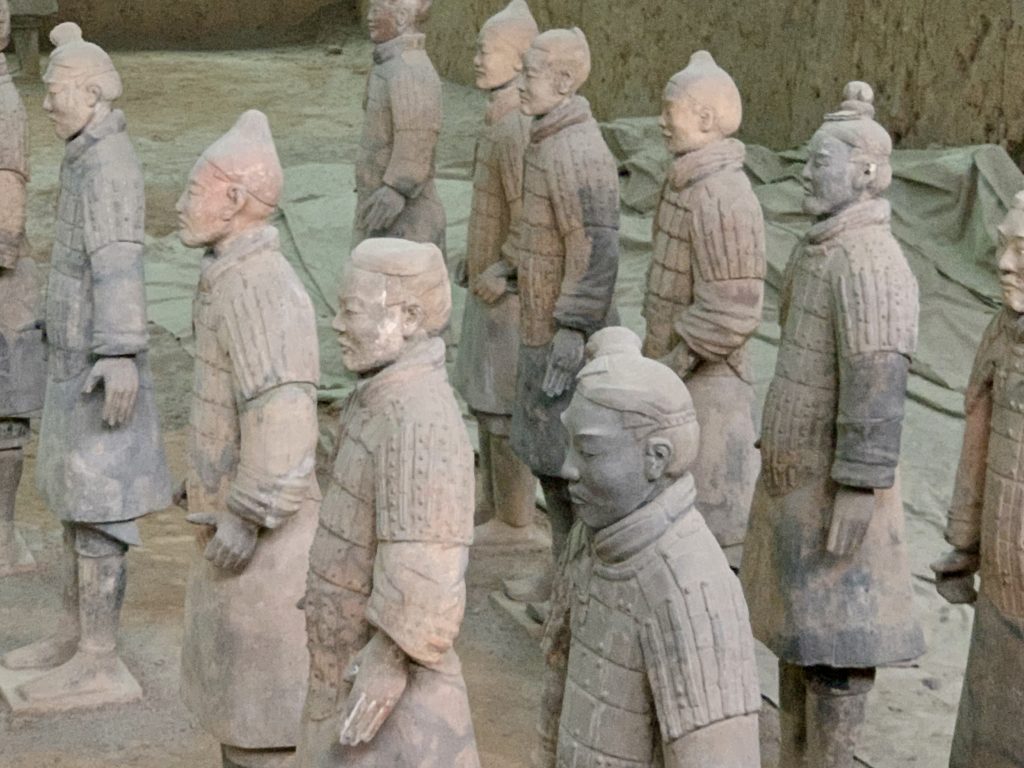
What every tourist comes to Xi’an for is a sight of the great terra-cotta warriors, lined up in their imperial burial pit, not discovered until 1974. And so we head over to the museum complex in the morning in grey slightly drizzly weather. I was here once before in 2007 when the parking lot was right in front of the sheltered exhibit space. Now there are large parking areas with landscaped walkways with scores of commercial store fronts, all tastefully done, between the public entrance and the museum.

The statues are impressive, as is the background history of their creation and restoration. But I remain a little skeptical concerning how much of the bodies of the majority of the earliest discovered warriors are original. I talk privately to my China host who admits that there is controversy about the warriors given that (1) Mao very much supported this project as representative of a strong central China and the timing is such that Mao had a vested interest to see this site recognized as a major archeological find and (2) China has never allowed any high tech age testing of the warriors. What do I think? I think that much of the bodies of the full scale army on display are original but that many of the faces and hands are probably well-done additions. The current ongoing excavation is more careful with the preservation and assembly of the broken pieces but it still seems that few faces are recovered. This does not distract from the truly impressive size of what is here and its place in both Chinese and world history.
Back in town we head toward the area of the Great Mosque, the largest mosque in China, built in the Ming dynasty, still located in the neighborhood of the indigenous Muslim families. The main market street in this part of town is a riot of color with clean attractive stalls selling a variety of cooked foods and cheap tourist souvenirs. The range is from neon bright individual fast food areas selling such varied choices as pulled noodles, a local lamb burger on bun, mango products, durian cakes, jackfruit snacks, bright balls of sugared sweets, chicken feet, ice cream and yoghurt drinks. It is the most hygienic street food I have ever seen. It is obviously built around the tourist trade, mainly Chinese tourists, who fill the streets.
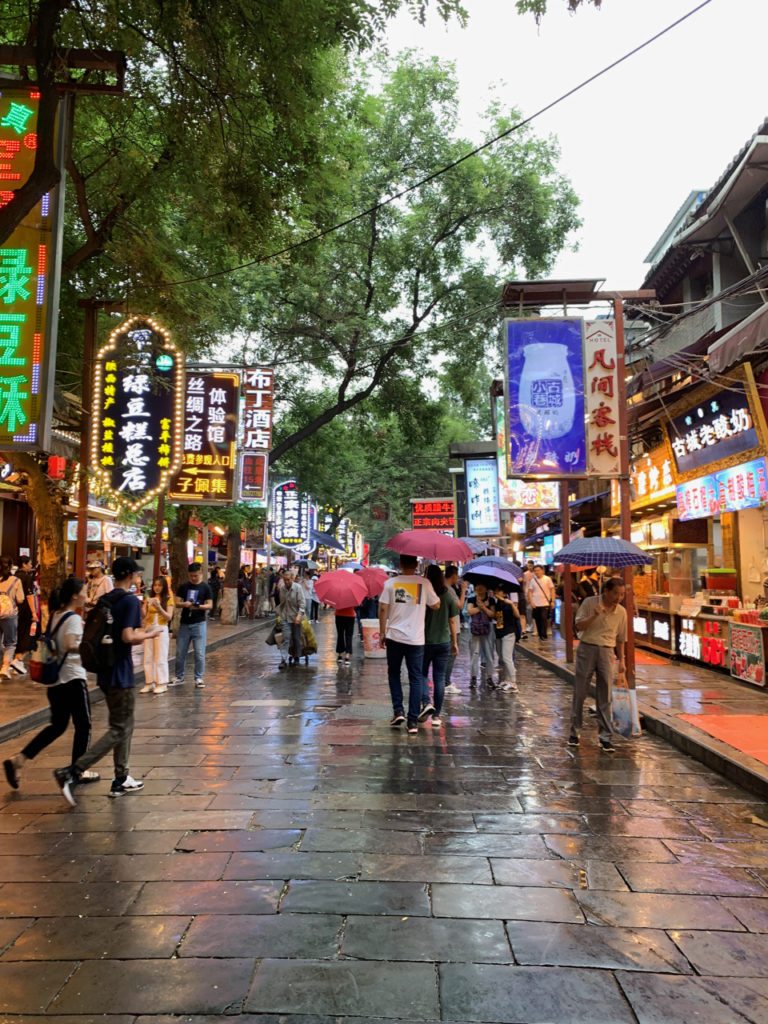

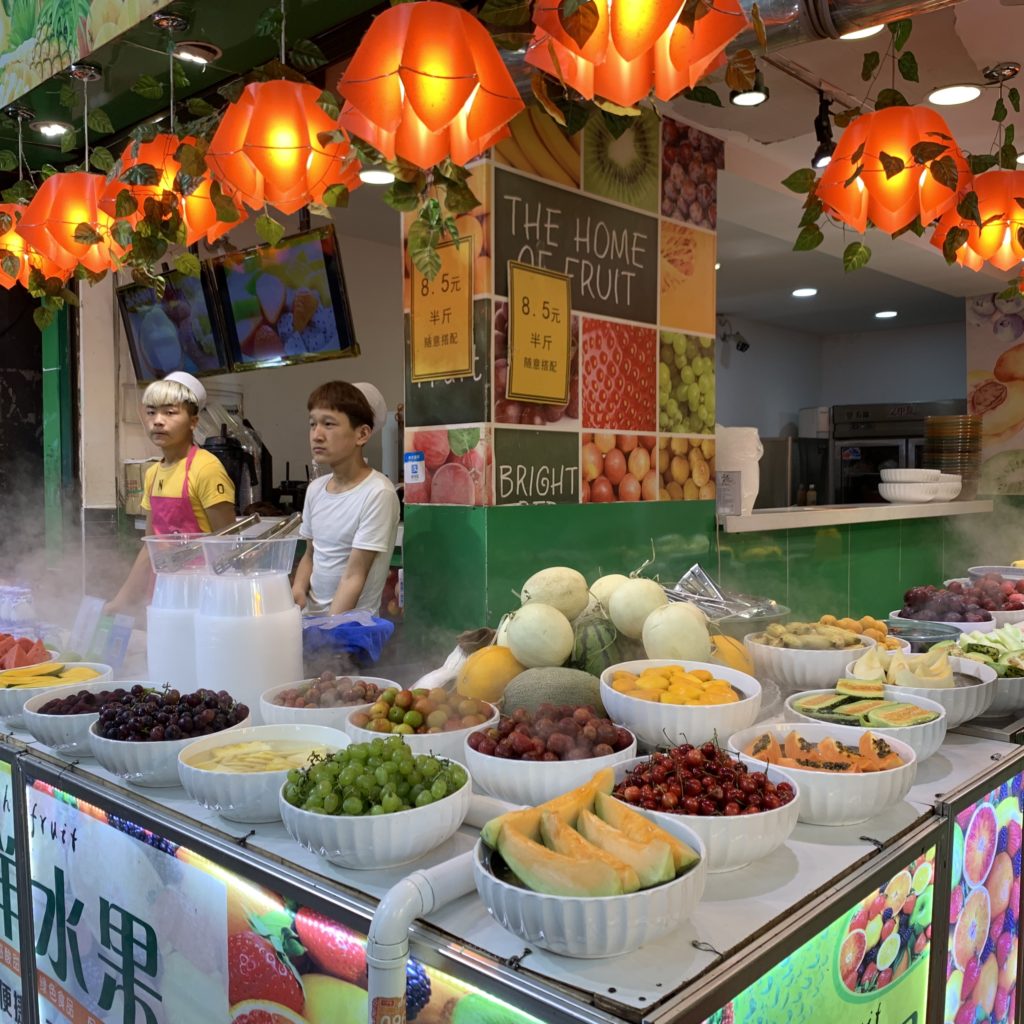


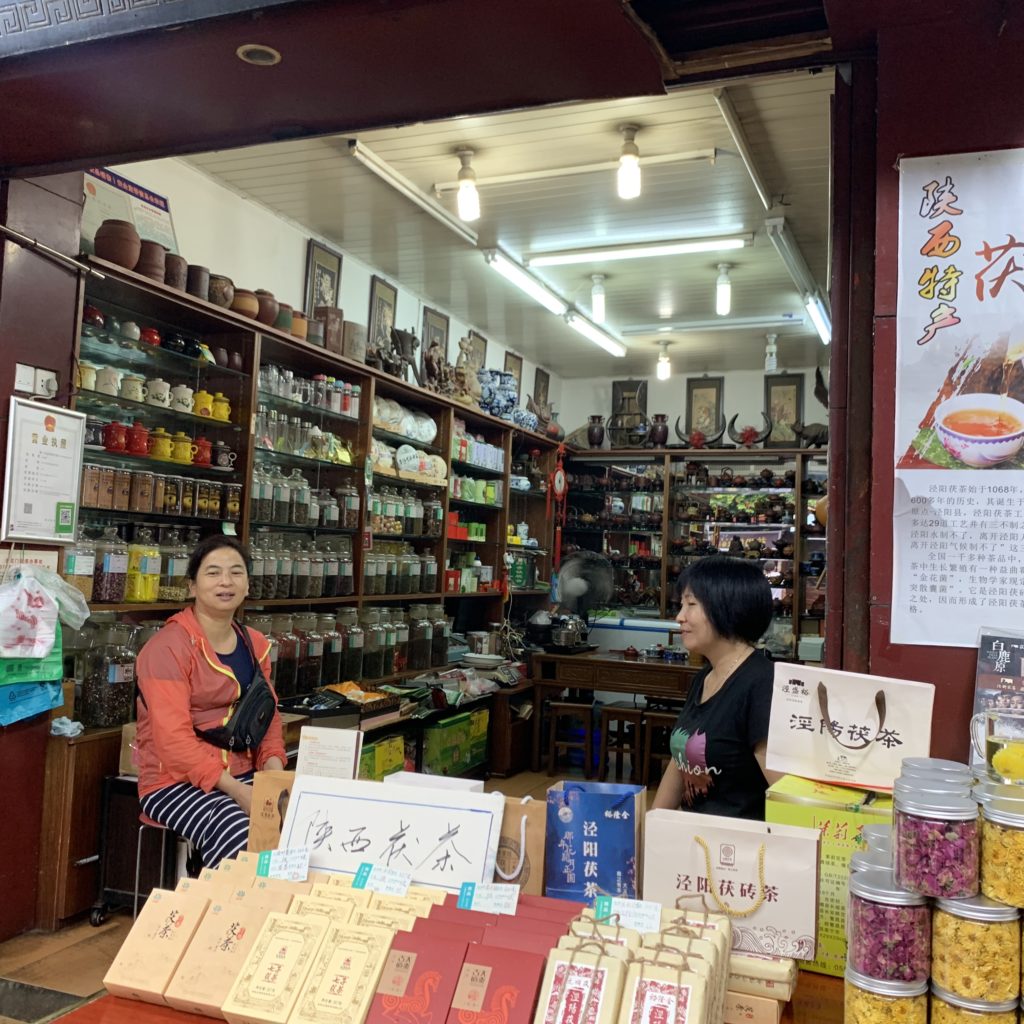
Off on a side street, we enter the property of the Great Mosque itself, layers of gates and small courtyards, finally ending in the mosque itself. There is a clock on the wall announcing their times of prayers which are conveniently set to match a working schedule, not exactly according to Islamic law. On this route, we meet a group of visiting Muslims from somewhere in China, having a wonderful time together and we laugh as we take each others photos in this ancient place.
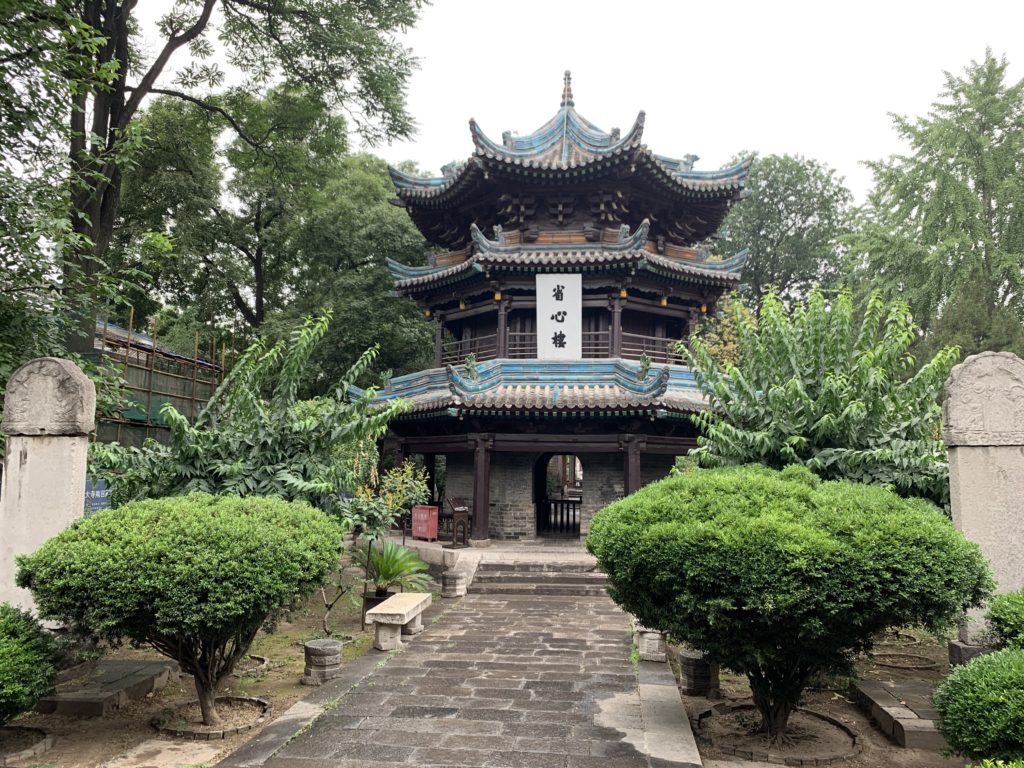
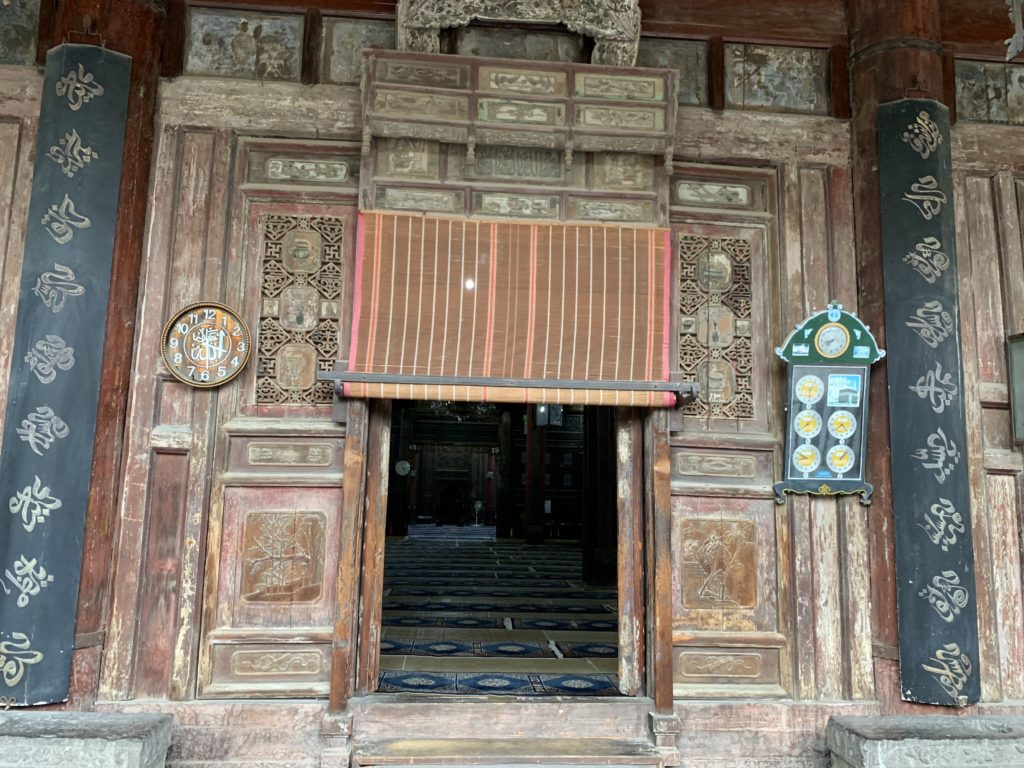
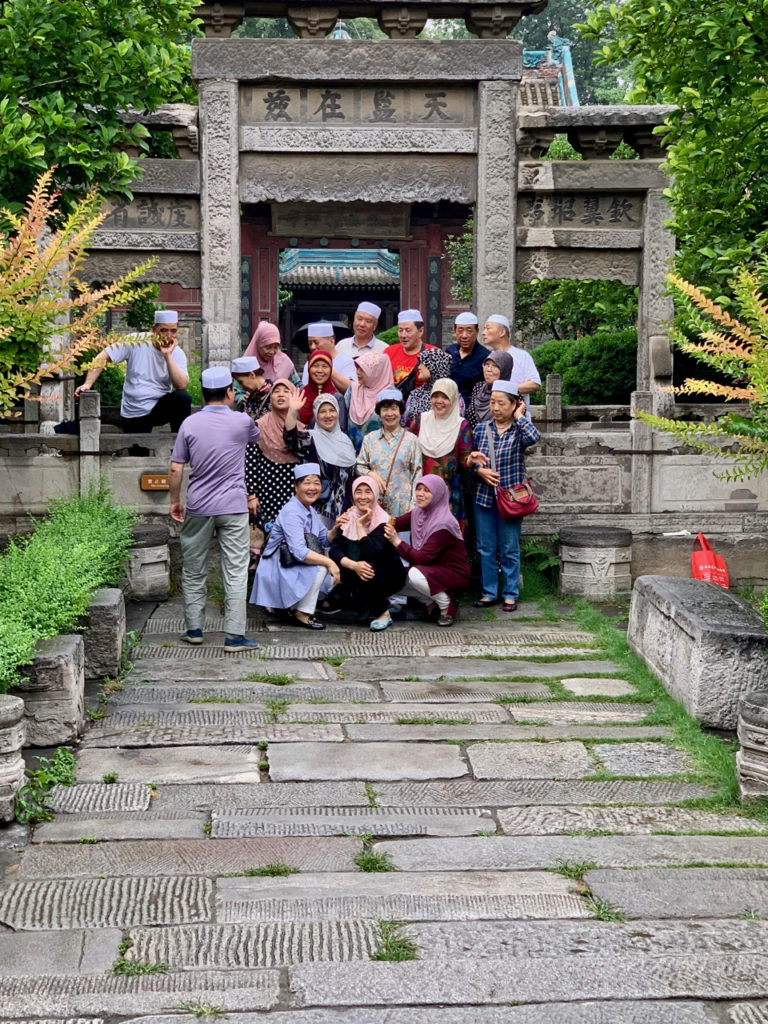
Another remarkable lunch, private dining room and Xi’an specialties, courses that go on and on, each one truly delicious. There always seems to be dishes here with white and black tree ears/wood mushrooms, in both appetizers and main courses. My favorite tonight: the tofu soup, slices of bamboo cooked with marinated cabbage, some form of zucchini prepared in wide strips, and it ended with all of our favorite, a tri-color small pasta soup.
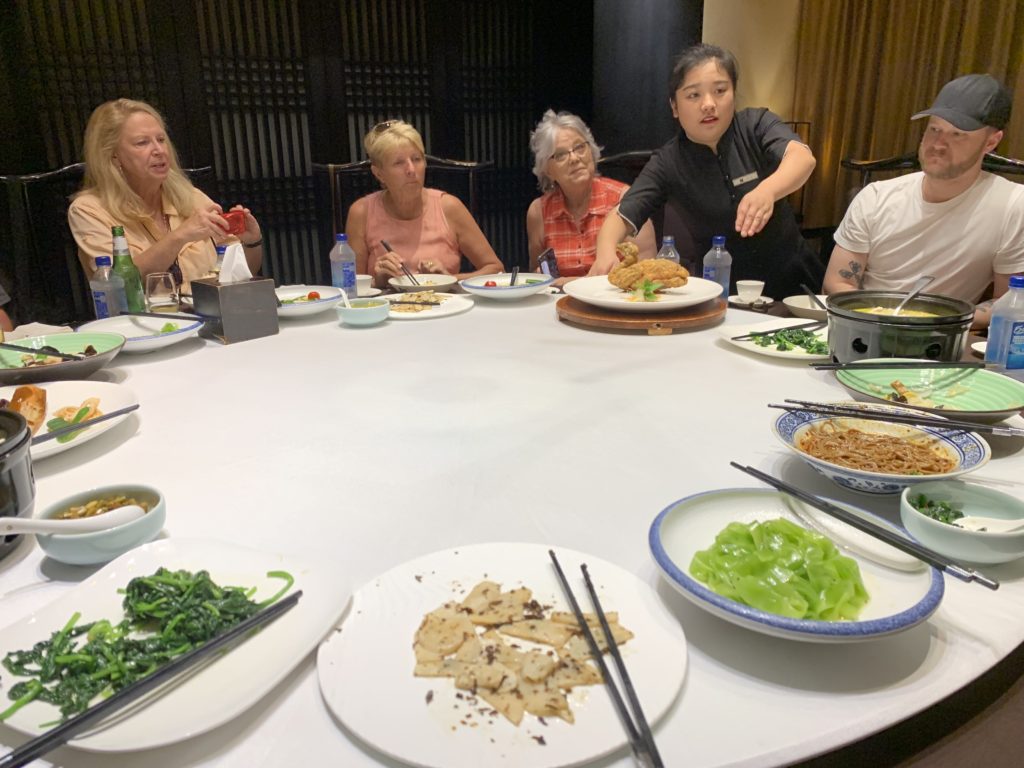
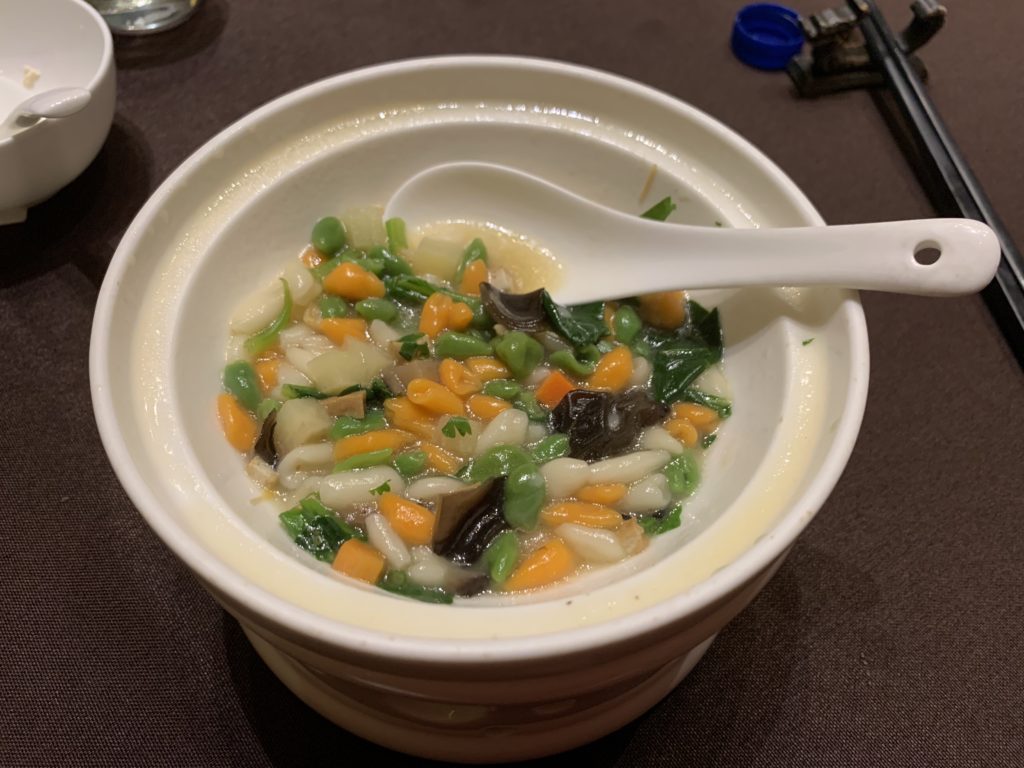
It is raining now, we use umbrellas, and visit the wall that surrounds the old city which has been repaired and restored in parts so that now one can walk around all 9 kilometers.
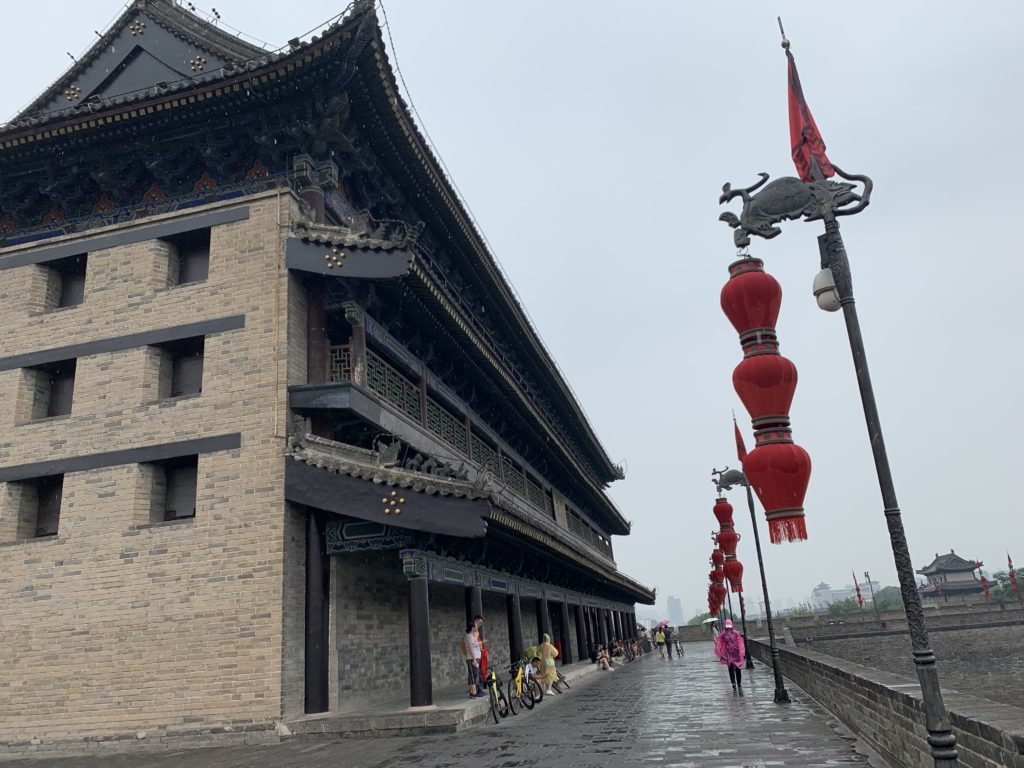
It is hard to believe we can eat more, but in the evening we have a dumpling making lesson and a many course dumpling meal, all delicious with exceptional dough — with special vegetarian specialties for me. I am getting quite spoiled.
Our luxury hotel here in the center of town is the Sofitel Legend, build in 1953 with the help of China’s Soviet friends and recently totally refurbished. The old architecture is more reminiscent of 1930’s art deco then the heart of Soviet realism and unusual. Communication is harder with staff than in the cosmopolitan Beijing where English is widely studied.
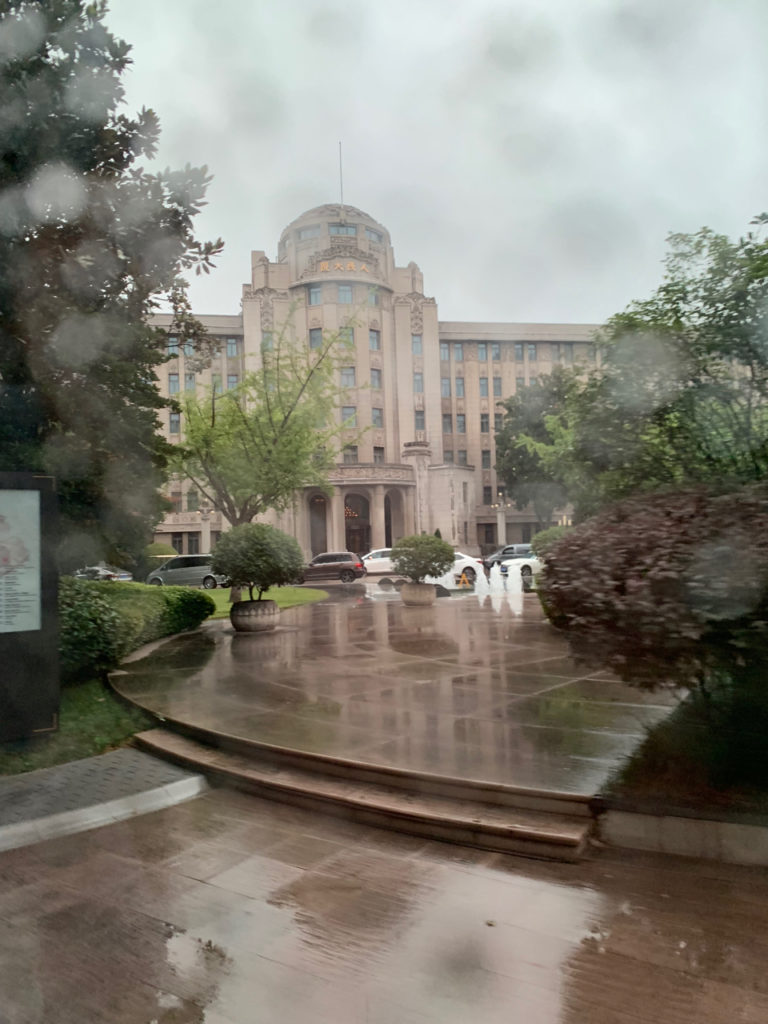
Stumbling out of bed the next morning, I join 4 of our group for a Tai Chi class given by our hotel, outside on a terrace, for which we are given special white outfits to wear as we try to follow the remarkable teacher. She is older and has obviously dedicated her life to this practice and she is lithe and strong and her few words in english are enough to help us follow along “Yes, No, Open Close”
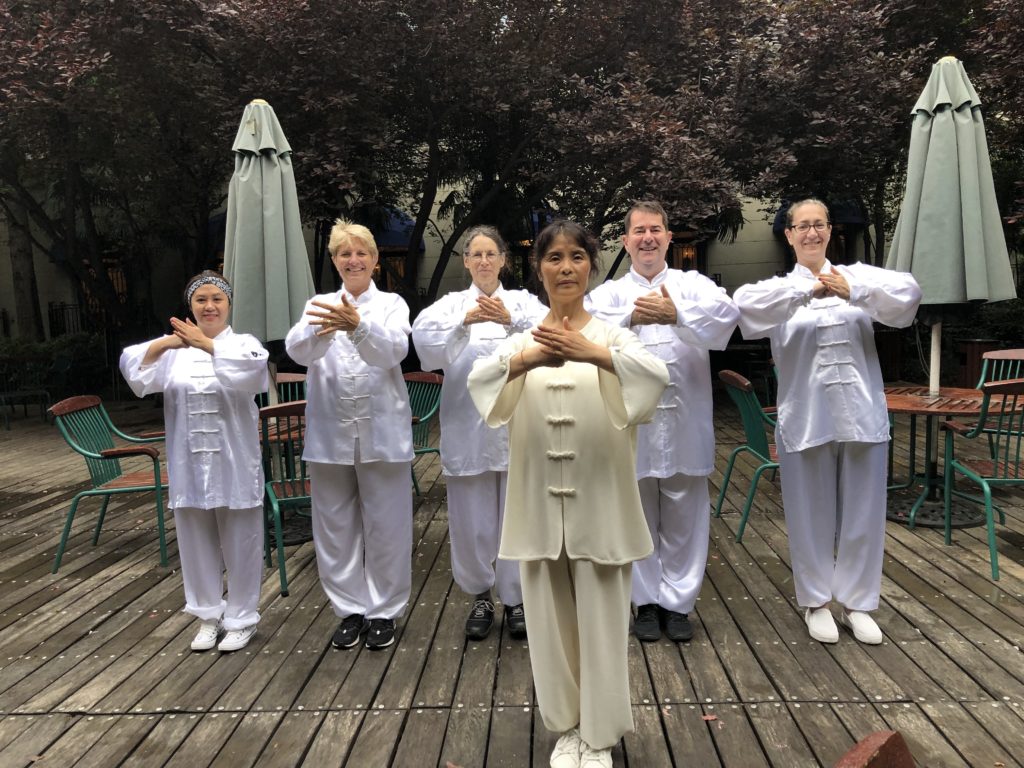
Our last stop on the way to the airport is the Yangling Mausoleum of Han Dynasty, another great archeological find in this area which was once the capital of China. The museum is underground, protected by air and humidity control, and is an impressive collective of burial objects of an Emperor and his wife from about 200 AD. These are all much smaller in size (about 1/3 as large) and detail than the great terra-cotta warriors, but just as impressive in their numbers – including great armies of animals marching along – and to me appear more interesting in their human simplicity. We were also told the cost of these kinds of burial pits for the imperials stripped the treasuries and enslaved the workers for the benefit of the afterlife of a very few. There are only a handful of visitors and we have the museum almost to ourselves, perhaps due to the light rain which, we are told, is unusual for this time of year in Xi’an.
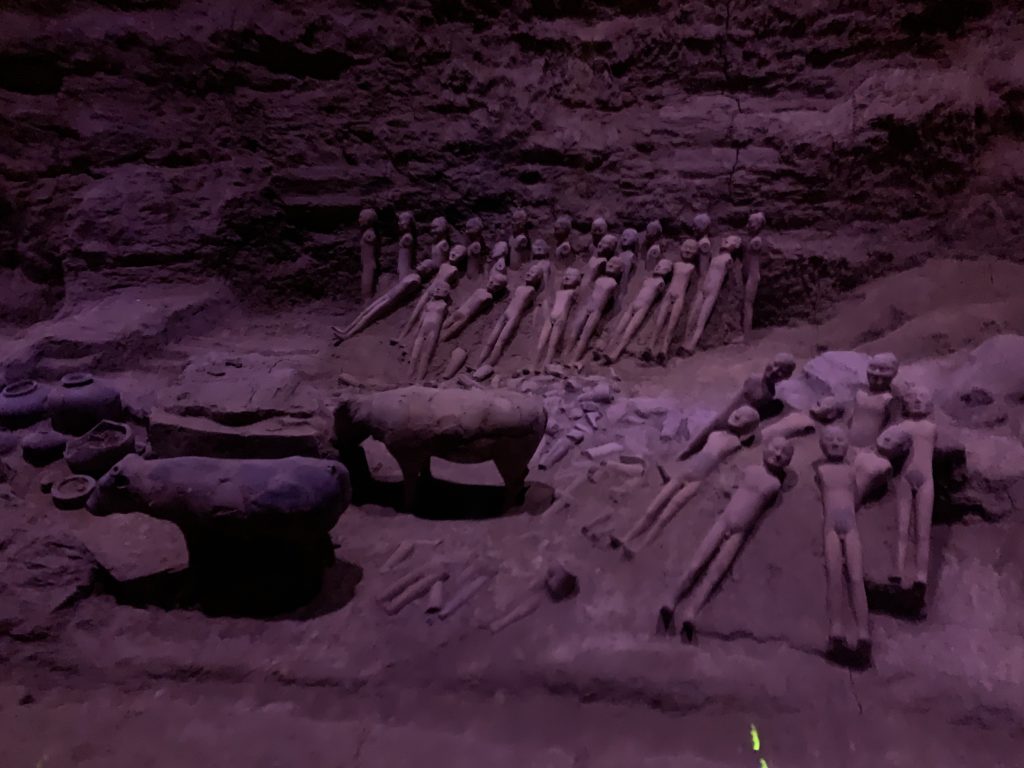
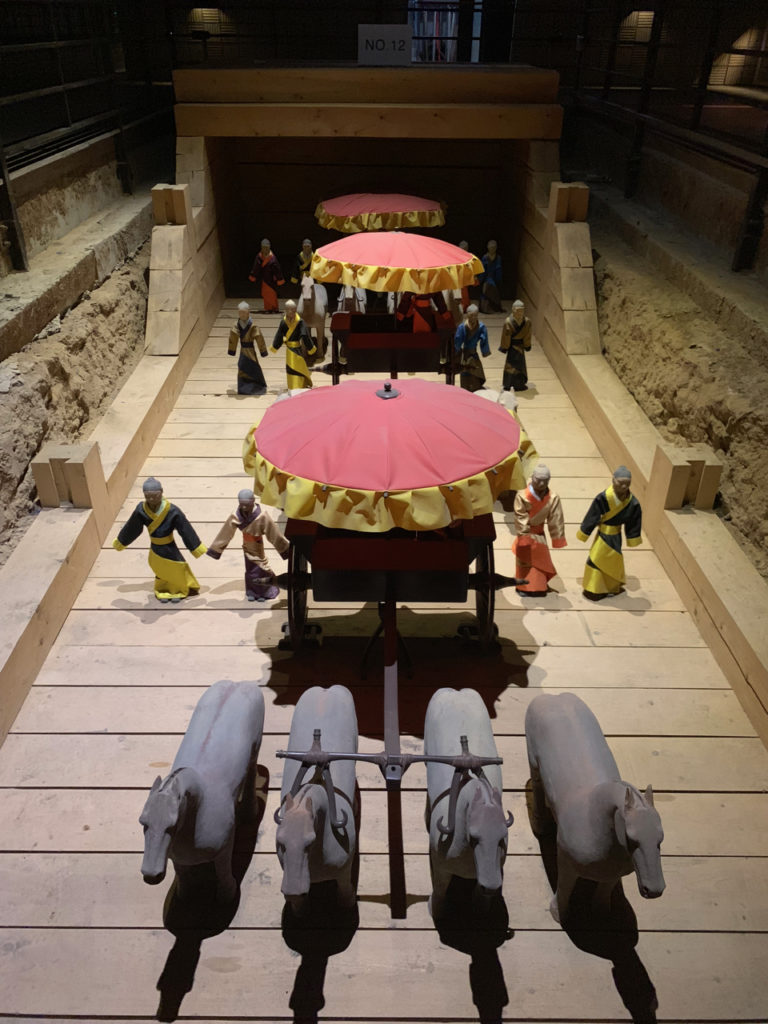
In the modern airport in Xi’an waiting for our flight to Guilin!
